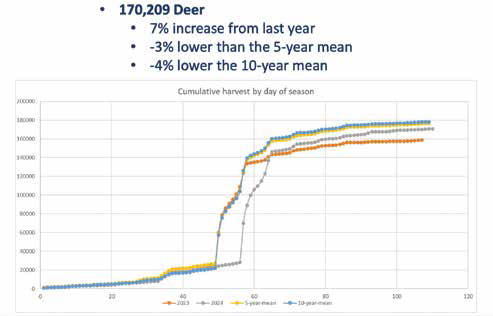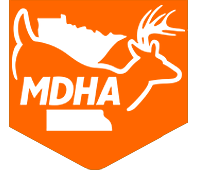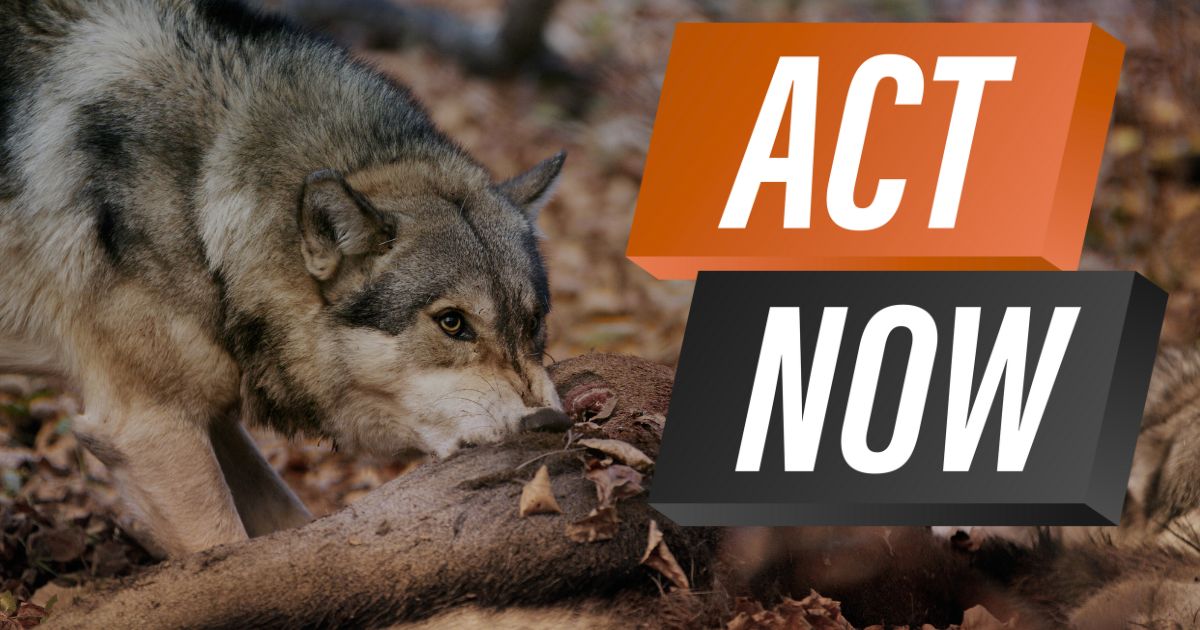
- Tim Spielman
- From Whitetales
- Hits: 4161
A deer-hunting 2024 recap: higher harvest, and the rise of the crossbow
- Tim Spielman
- From Whitetales
- Hits: 4161
With the last arrow – or bolt – flung and the final whitetail felled during Minnesota’s 2024 deer-hunting seasons, the total kill had surpassed 170,000 for the first time in two seasons.
But not by much. As of late January, the DNR’s preliminary estimate was a harvest of about 170,500 deer.
Still, it represented an increase of nearly 12,000 from a year ago – about a 7% overall hike upward that included greater kills in all four of the Minnesota DNR’s designated regions, according to Todd Froberg, the department’s big-game program coordinator.
Surprising? Maybe not so much, considering the non-winter of 2023-24 across nearly all of the state. But, perhaps just a little, given that the DNR played it conservative, regulations-wise, given that deer-population goals in many areas still have varying degrees of recovery yet ahead.
“I didn’t think we’d jump that high,” Froberg said of the cumulative deer harvest. “I was expecting 163,000 to 165,000-ish, so this was better than expected.”
By method of kill, archery hunters took an estimated 27,500 deer this past fall, a 16% increase over the 23,800 animals taken a year ago. While it’s likely the second year of “crossbows for all” played a role in the harvest increase, it’s probably no small coincidence that the 2024 harvest was the second-highest ever for state bowhunters. Only during 2020 – the year the COVID pandemic sent more than 109,000 archers fleeing for the woods – was there a greater archery kill, Froberg said.
Somewhere in the neighborhood of 105,000 archery licenses were sold in 2024.
Firearms hunters – far and away the takers of the greatest number of deer – saw a total harvest of about 135,700, up more than 6% from a year ago. And the total number of firearms licenses sold (about 405,700) was nearly identical to a year ago – but almost 30,000 off the pace of four years ago.
The take of deer via muzzleloader – about 8,250 – increased just 1%. Froberg theorizes – because data isn’t available to offer solid proof – that some crossbow hunters opted to continue to use that option rather than purchase a muzzleloader license, given the hunter-friendly nature of crossbows, even during the later, colder portions of a Minnesota deer season.
The crossbow effect
It was during the state’s legislative session in 2023 that the crossbow was authorized as legal to use by anyone and everyone during Minnesota’s archery season, which stretches from mid-September until the end of December.
But the new law didn’t offer methods by which DNR personnel could provide definitive answers regarding the number of hunters using crossbows, the percentage of those successful compared with their vertical-bow brethren, and only the hope that archers registering their kills would offer accurate information regarding how that kill was made.
“We really don’t know how many crossbow users there are,” Froberg said.
What’s known – based on deer-registration information – is that it’s apparent crossbow harvest of deer increases as the archery season progresses, which really shouldn’t be a stunning revelation.
During September and October, Froberg said, registration information shows more archery deer taken via vertical bow during the majority of hunting days. But come November and December, the prominence of crossbow harvest grows (as it did a year ago, too).
By month of harvest: For September, the vertical bow harvest was about 2,100 deer; for crossbow hunters, about 1,600. In October, vertical bow harvest outpaced crossbow harvest – about 5,100 deer to about 4,500 deer. The gap narrowed in November, with about 5,500 deer taken by vertical bow and about 5,200 by crossbow. And in December, crossbow users killed nearly 2,000 deer, while vertical bow users harvested about 1,700.
“It’s just a steady increase (in the percentage of crossbow kills versus vertical bow kills) later in the season,” Froberg said. “It shouldn’t surprise anyone.”
In December, an estimated 54% of the bow kill was the work of crossbow hunters, per registrations. Overall, DNR information indicates, crossbows accounted for about 48% of the total archery kill, and the kill by that method was 28% higher than a year ago. The vertical-bow harvest was up 7% this year.

Buck harvest was nearly identical for the two bow choices: 48% for crossbows, 47% for vertical bows.
How high will crossbow use go? That’s anyone’s guess. But, Froberg points out, other Midwestern states saw rapid growth in their use, but eventually the usage plateaued, based on recent years’ data: Wisconsin at about 56%, Missouri at about 53%, and Illinois at 51%.
“It’s only going to go so high,” Froberg said.
He said department officials hope to get a clearer picture of crossbow use when analyzing the results of a deer-hunter survey this winter. Such surveys in past years, Froberg said, often centered on specific issues that affect deer and deer hunting, such as chronic wasting disease and antler-point restrictions, the latter of which no longer exists anywhere in Minnesota.
“The big focus this year is the crossbow (information),” Froberg said – things such as efficiency of crossbows, wounding loss, if all-inclusive use increased recruitment of new hunters (or retained older ones), at what distances crossbow users shot and/or killed, deer, etc., and reasons why hunters may have converted from vertical bow to crossbow.
Generally speaking, the highest proportions of crossbow users in Minnesota tend to fall into the categories of younger and older hunters, and females. Others with lingering injuries – shoulder pain, for example – might choose a crossbow, too.
But other folks have reasons for opting for crossbows, too.
Brandon Schad, the 40-something assistant central regional wildlife manager for the DNR, is one of those hunters. He took up the crossbow the first season it was legal and harvested two deer. This past season, he harvested two more. For Schad, it might be considered a product of his lifestyle.
“For me, the reason I looked into it was that I live in town and getting out and practicing regularly (with a vertical bow) … was really difficult,” Schad said. “With a crossbow, I don’t have to shoot as frequently to be proficient.”
Toss in a busy work schedule coupled with a daily commute, and the ease of mastering crossbow use simply seemed logical. “They’re very accurate, very efficient,” he said.
Schad adds that he believes he gets better results with a crossbow, too, regarding bolt penetration and deer recovery. He says he limits his shots to about 30 yards – similar to when he used a vertical bow.
Given a crossbow’s advantages, Schad says he accepts what a crossbow doesn’t offer that a vertical bow does: vertical bows are typically more quiet, less bulky, and easier to maneuver with in a treestand.
But, he said, “It fits with what I like to do, and it increases my comfort level.”
For the record, prior to the 2023 season, crossbows were allowed during the archery season for hunters age 60 and older, and for those deemed disabled.
Per bill language in 2023, the all-inclusive crossbow season is due to sunset in June. Thus, legislative approval is required this session for it to continue. Most agree that’s likely. DNR officials hope this year’s provision might also come with language to make it easier for the department to track crossbow use, for starters, and perhaps other aspects of crossbow hunting.
That would be, Froberg said, “better from a management perspective.”
The DNR also has been charged by the Legislature with issuing a report on the effects of crossbow use on deer populations – an impossible proposition? – by October.
Harvest by region
Consternation about the current status of and the future of deer hunting has been greatest for the past several years on the state’s northeast – an area rich in deer-hunting tradition and, not many years ago, rich, too, in whitetails.
In a span of just over a decade, from 2012 to 2023, per DNR data, hunter numbers in the 100 Series deer permit areas (the northeast) dropped from some 181,000 to about 128,000. In 2012, hunters in the northeast killed about 59,000 deer; in 2023, the harvest was about 25,000.
According to the DNR’s preliminary information, this years northeastern Minnesota deer kill was just short of 28,000, a 9% increase from last year, but 13% below the five-year mean of about 32,000.
There’s no doubt that severe winters in this part of the state – where Mother Nature serves up her worst – have resulted in deer losses. It’s true, too, that wolves (still federally protected) have taken a bite out of the population as well.
Another mild winter will aid whitetails in that portion of the state, but Froberg cautions that regulations where deer numbers are at their lowest will probably remain conservative. In some DPAs, he said, deer numbers are 50% below goals set by the department, with input from the public, during the recent goal-setting process.
“We not going to see huge jumps (in deer numbers or harvest allowances),” he said. “The sentiment from northern (DNR) wildlife managers is that we don’t expect to take the gloves off yet. All in all, those managers are cognizant of wanting to rebound those deer populations.”
Might that rebound continue in the northeast and elsewhere in the state? Cold snaps in January likely bumped up “winter severity index” points in some locations, but deep snows had yet to accumulate. Both are considered as the DNR uses the tool to classify the severity of a Minnesota winter and its affect on deer, whether from direct mortality (starvation or increased susceptibility to predation) or the related effects that sap a whitetail’s fatty reserves.
(In Minnesota, the WSI is calculated weekly from Nov. 1 to May 31, according to the DNR’s website, https://www.dnr.state.mn.us/mammals/deer/management/wsi.htm. Scores accumulate throughout the winter, with one point for each day with an air temperature of 0 degrees Fahrenheit or lower and an additional point for each day with a snow depth of 15 inches or deeper.)
Froberg in mid-January said that heavy, wet snowfalls this winter could still result in some northern-deer mortality, especially if that snow lingers into late March and April.
But for now, the outlook is positive.
“Where we are now … it could be a huge boon for northern deer populations,” he said.
Bag limits for the state’s respective DPAs, he said, are set in mid-April each year.
The remaining three regions in the state also saw increases in deer harvest this year, based on the DNR’s preliminary harvest numbers.
In the northwest region, the kill was up 8% (down 7% from the five-year mean), with a take of about 46,400 deer.
In the southeast/central region, deer harvest was up 9% from last year (also a 2% increase from the five-year mean), and the take was about 68,700 whitetails.
And in the southwest, the deer kill of about 26,500 was 4% higher than a year ago, and 1% above the five-year mean.
(The “B” season in the southeast saw a 6% decrease from a year ago (4,200 deer), which also was 5% below the five-year mean.)
A wealth of other subtle details regarding the 2024 deer-hunting season will be revealed once data is analyzed and the year’s annual harvest report is compiled and released later this year.
Spielman is editor of Outdoor News, an unsuccessful pursuer of deer in 2024, and an optimist who believes, always, that next season will be an even better season.











